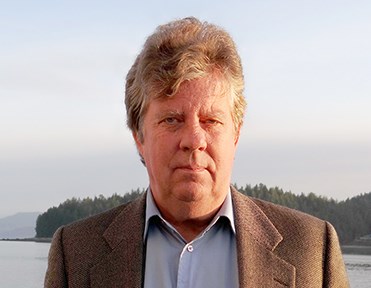Earth scientist David Hughes of the Post Carbon Institute has researched the energy sector for four decades, including 32 years with the Geological Survey of Canada. Here’s what Hughes said about liquefied natural gas production and the role fossil fuels play in our future. Hughes will be presenting “LNG: Debunking the Myths” at the Gleneagles Golf Club in West Vancouver on Thursday, Feb. 11 from 6:30 to 9 p.m.
Q: What will be the focus of your talk about LNG Thursday (Feb. 11)?
A: I am going to be focusing on the big picture of LNG. Is it better than coal, how much energy Canadians use, what has happened with oil and gas in America and world oil prices?
If you look at LNG prices right now, the price in China is about $7 per million btu. The gas coming out of northeast B.C., I would expect that you need to pay $3 or $4 for the gas. The cost of liquefying it, putting it in a ship and moving it to China is about $6. So that is $9 and you can only sell it for $7. I would sort of question the sanity of that looking at those prices, in the short term. Of course, these are 20-year projects so they have to look at the longer term.
Q: One argument is we are not being fair to the people in China who are suffering from coal production and that liquefied natural gas from here will save them from that.
A: On a full-cycle emissions basis, the planet would be better off if China built state-of-the-art coal plants rather than burning B.C. LNG for at least the next 50 years. It is true that at the burner tip gas produces about half the CO2 of coal. But you have to consider full cycle emissions from the wellhead to the burner tip for gas. The hydraulic fracturing process and the supply chain – pipelines, processing plants – emit considerable amounts of methane, which is 73 times as potent as CO2 on a 20-year timeframe and 25 times as potent on a 100-year time frame (because methane leaves the atmosphere more quickly than CO2). Plus, about 20 per cent of the gas must be burned to provide power for the liquefaction and shipping process.
If you compare full-cycle emissions from B.C. LNG burned in China to a state-of-the-art Chinese coal plant, which runs at 46 per cent efficiency (compared to 33 per cent efficiency for an old coal plant), B.C. LNG is 27 per cent worse than burning coal over a 20-year timeframe and seven per cent better on a 100-year timeframe. So, you’d need to wait more than 50 years until you break even, while suffering from the effects of increased greenhouse gases in the meantime.
Q: What about the goal of getting off fossil fuels and turning to renewables?
A: I think that is laudable, but the fact of the matter is, 80 per cent of the energy we use today is fossil fuel.
Q: But couldn’t we be putting a lot of money into say solar, wind power and other renewables? You don’t think that is viable right now?
A: I think we should be building windmills and solar, certainly, but we have to be realistic in how much they would have to be scaled to get anything close to the consumption Canadians have.
Q: What should the government do?
A: I would cap growth in the oil sands. I would look at what is left of our gas as being a strategic, long-term resource and I would not recommend growing production so we can liquidate it at bargain-basement prices now, because it is going to be valuable later. There is no doubt in my mind that fossil fuels will be used for decades.
Q: So, you are saying slow everything down, simplify it and use what we have for ourselves while we are still dependent on fossil fuels?
A: Right, if we do that, we immediately stop growing our emissions. Fossil fuels could be more usefully diverted [to the production of renewables], or some of them anyways.
What do you need to build a windmill? It turns out you need fossil fuels to turn it into steel, and you need diesel trucks to move it all.
As soon as you have built the windmill and it is up, the fuel cost is free. You might have to run it two or three years to pay off the energy it took to build it, but then you get 17 years of free fuel. The same thing can be said for solar panels.
I am convinced we do need to ramp up renewables aggressively, but we have to do the math as well. I don’t think anybody has done the math. There is so much emotion built into this on all sides.
Q: What can local governments do?
A: We need to put money into infrastructure so people can use less energy and still have a good life.
World oil is going to peak at some point, if you have thought about it and planned ahead and reduced your consumption you are much less vulnerable.
Give people an alternative so they don’t have to drive 40 miles to work.
Q: So as an individual, does it help if I make changes like putting up solar panels or driving a more fuel-efficient car?
A: I think it helps you. It helps you become a lot more resilient. If prices go up a lot and you are only using half as much energy, then you are protected.




